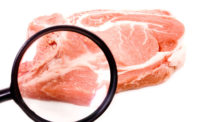Online exclusive: consumer trends Q&A
Andy Callahan, president, Hillshire Brands Co. Retail, sits down with The National Provisioner to discuss the trends driving the market heading into 2013.

Prior to his current position, Callahan served as Senior Vice President, Chief Customer Officer for Sara Lee Corporation’s North American operations, as well as President of Sara Lee’s $1.8 billion North American Foodservice segment and Vice President of Marketing for Sara Lee’s breakfast and snacking business unit.
NP: In general, how was 2012 for your company, and what are your expectations for 2013?
Callahan: In general 2012 (back half of our fiscal FY11 and first half of our fiscal year FY12) was really a fixing year for us - a year of significant transition for the better as we have become significantly more focused.
Through the process of separating into a pure-play meats company, we were able to go through the process of reviewing and understanding where we are in the marketplace and how we can best compete. There was a strong focus on understanding exactly what are our greatest assets are. That process allowed us to identify the capabilities needed to reach our goals and allowed for us to ensure we were putting the right people behind those needs in order to win.
We were able to complement a highly talented team with external talent who had very extensive experience in the areas in which we identified great opportunity. Through identifying our capabilities and looking deeper into the categories in which we complete, we concluded our portfolio of brands are unrivaled and by investing behind them with advertising, innovation and a growth mindset we could create value.
In 2012, we’ve focused on redefining ourselves from managing categories to being brand builders and taking our greatest asset after people — our equity — and figure out how we can continue to invest, build and strengthen our equities.
We had to look at establishing and defining our core and at our investor day in August of 2012. I highlighted our key principals for brand building with a major one being to effectively build off a strong core. By applying all of our core foundational elements across all of the businesses in a consistent way we saw great opportunities to fine-tune price gap issues, distribution opportunities and packaging updates. We have created greater opportunities with changes in pricing, distribution, packaging, product formulations and most importantly MAP spend.
In 2012, we were able to focus and invest much more into the brands via increased MAP (advertising) spend. We have seen significant success with increased MAP spend for brands such as Jimmy Dean. Back half FY12 has seen increases in volume directly related attributed to those increases in MAP spend. We’ve seen additional success with brands such as Aidlells in which MAP spend was increased and that business has responded well to that investment. We are in the process of doing the same thing for Hillshire Farm.
In fact, this last September we debuted a new commercial spot for our Hillshire Farm lunchmeat business called, “Timer” developed by the brand’s new creative agency Y&R out of New York. This spot speaks to the evolution of the Hillshire Farm brand in which we are paying homage to our heritage and really getting back to the roots that made the brand such a highly trusted sausage brand today.
NP: What trends have you seen among consumers and their buying habits? What are some of the ways that your company has responded to those trends?
Callahan: Convenience and the need for authenticity are unmistakable trends and we have great brands poised to deliver on those needs. We feed a robust innovation pipeline using deep consumer insights that showcase to us where the consumer needs are and how we can best meet those needs. It’s just as important to understand what drives the purchase as it is to understand how the consumer actually uses and interacts with our products once they get home and what opportunities there are for providing new ideas that can meet those usage needs even better. These insights give us more ideas for where our equities can travel.
Consumers in the meat space want convenience but they want convenience married with a strong focus on authenticity. So, they want convenience but without the offering being overly processed and without compromising quality and we have been able to do this quite well with products such as our Ball Park Flamed Grilled Beef Patties. We are able to deliver on the authenticity of a great tasting burger but in a way that allows for the consumer to easily pop it into the microwave to satisfy their need for convenience. Consumers expect high quality and convenience and have very high standards. The brands that can meet this need are the brands that will be winning in the marketplace.
NP: Has the U.S. economy altered the way that consumers shop at the retail level over the last 3-4 years?
Callahan: Consumers are willing to pay for premium products, but they still demand the best quality for the best value. In our meat categories specifically, private label is under developed because value and high quality really matter in the meat space more than any other category and we know that private label is sometimes perceived as great value but lesser on the quality scale.
As the economy goes up and down and we are dealing with changing commodity prices all of the time it is critically important we understand the value and quality our products have relative to what a consumer is willing to pay for that value and quality. When we speak about pricing and value, we also look at how this effects how the consumer shops in different types of grocery channels. When a consumer walks into a dollar store for instance, they are still looking for branded products with a strong value proposition. We recently gained distribution into Family Dollar stores – stores that are now investing more in the refrigerated space of their stores. In a channel like this, we are able to offer consumers our branded products in a way that still offers them a great value without cheapening the product or taking large discounts to our bottom line by simply providing our products in an alternative format, size and price, but with the same brand name quality, that meet the need of the consume who shops that channel.
Consumers are smart and they can and do price compare so understanding price vs. the competition and price relative to the benefits is key. In 2012, we’ve invested even more in a revenue management group that will help us perfect and optimize our pricing in the marketplace.
Looking for a reprint of this article?
From high-res PDFs to custom plaques, order your copy today!







